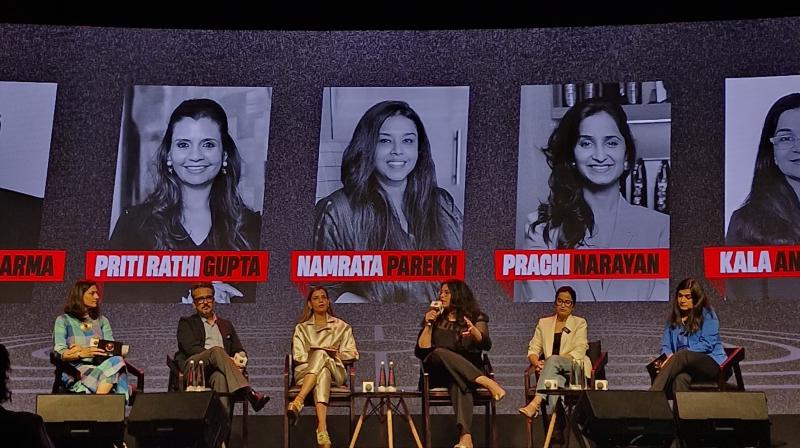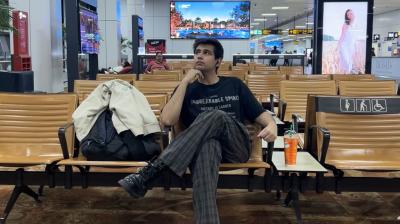Siddharth Sharma, head - content, JioHotstar; Priti Rathi Gupta, founder, LXME; Namrata Parekh, co-founder, Meraki Sport and Entertainment; Prachi Narayan, managing partner and head – content, Havas Play; and Kala Anand, director – sports advisory, KPMG India, discussed how the commercial and cultural power of women’s sports can be unlocked in India.
The panellists were speaking at 'The Sports Women Huddle 2025' event organised by Capri Sports.
The moderator for the panel was Shaili Chopra, founder, SheThePeople and Gytree.
Opening the discussion, Sharma spoke about how the 2025 edition of the Women’s Premier League, despite clashing with the ICC Men’s Champions Trophy, saw viewership grow by 50% on television, 34% on digital, and more than 100% on connected television.
But this was done strategically, as no WPL match was scheduled on a day when the Indian men’s team was playing at the Champions Trophy.
“Team India matches were aired on one channel, and matches featuring other teams were on other channels. The same channel that aired Team India’s matches also aired the WPL games,” said Sharma, adding that one cannot avoid clashes with cricket tournaments because the calendar is already saturated.
“We need to leverage and widen the funnel to get eyeballs, generate fandom, and make it accessible,” he added.
Parekh stated that the ecosystem needs to come together to grow women’s sports.
She explained, “India is a hero-worshipping country. More than the sport, it’s the story that matters. And the story usually needs to portray triumph against all odds. Heroes are created when there’s competitive game time on television, which enables these stories to be told.”
She added that while India remains largely a cricketing nation, some other sports are doing well while others continue to struggle.
“Sports can only grow when people play them. If people don’t play a sport, they won’t want to watch it,” she said.
Narayan spoke about the importance of brands getting involved in sports to drive growth.
However, she acknowledged that ROI needs to be considered.
“It’s the classic chicken-and-egg situation. But the move has to be made — and it has to be made now,” she said, citing the PVMA campaign to announce PV Sindhu as a brand ambassador, which was executed by her agency.
“It was bold yet minimalistic. It went beyond a brand deal and felt like a creative collaboration,” she added.
She pointed out how the WPL is changing the ecosystem, with more brands now having conversations about partnering with women’s sports.
“Brands are reflecting the way sports are evolving. Major athletes are now coming from small towns. Brands are realising that to build long-lasting equity and legacy, they need to identify and back these stories early. This makes economic sense too. It’s not about catching an athlete only once they’re winning,” she added.
Anand stated that the biggest difference between men's and women’s sports is that when brands partner with the former, they look at ROI; with the latter, they look at ROV — return on value.
“The failure lies with the brand if it can’t convert that value. There’s a 25–35-year-old working demographic that’s showing a growing interest in buying brands endorsed by women athletes. This is the same consumer watching men’s sports and even streaming content like Netflix,” she said.
Adding to this, Gupta pointed out a lack of education among brands.
“There weren’t enough women in sports earlier. The mindset of sport being a viable career or a source of income was missing. Today, India is 51% women. 40% of women in the country are working. There’s more money in their hands. Women decide what they want — whether it’s a suitcase or a car,” she said, highlighting women as a powerful and growing consumer segment.
She added that most female athletes lack financial acumen.
“They need to think about how to grow the wealth they’re generating, both through playing and endorsements. Serena Williams runs a USD 900 million empire. Athletes have a short career span. Instead of just charging endorsement fees, they should consider equity or investment in the companies they represent,” she suggested.
From a broadcaster’s perspective, Sharma said, “I would want more people to watch sports, for sure. But the onus remains on the ecosystem. Broadcasters, federations, governments, franchise owners, and league owners all need to come together.”
Anand added that brands need to stop using women athletes as ambassadors only for categories conventionally associated with women.
“Don’t use them as brand ambassadors for just home décor or similar categories. The Skechers example, where both men and women are brand ambassadors, shows how brands can convey that women athletes are on par with men. It’s about the power of packaging. For example, Virat Kohli and Anushka Sharma together in the recent ‘Visit Dubai’ campaign are perceived as 10x more powerful than Virat alone,” she said.
Parekh cited the example of Emami’s investment in East Bengal Football Club, which led to the strengthening of the Indian national team.
“After the acquisition, the women’s team was revived. The team is now playing in the AFC Cup, and 12 players from that club are part of the national team,” she said.
Narayan acknowledged that while there’s still a long way to go, brands are recognising that women now have stronger voices, thanks to their financial independence.
She explained, “Brands are understanding that athletes can drive cultural and social change. These women athletes are the relatable role models brands have been looking for.”
Gupta concluded, “It takes women to see the problems women face. We see the gaps and understand the issues. Women will create more businesses that cater to women consumers. The new generation of fans goes beyond wins — they are driven by purpose. We’re witnessing a different world, one that’s greener and more equal. Indian women athletes are winning medals, and we’re watching them do that. Now, they need to win equity, wealth and voice. We must prepare them for the boardroom.”












